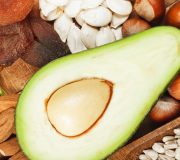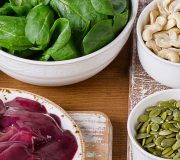What is Spanish Moss?
Commonly known as Spanish Moss, Tillandsia usneoides, is neither Spanish nor a moss; it is a flowering plant that grows on trees in particularly humid locations. Spanish Moss coexists peacefully with the trees it grows on, and it is considered a perennial “epiphytic” herb, meaning it grows on top of plants and absorbs moisture and nutrients from its environment.
This moss clings to tree branches throughout much of the southeastern United States, and is the region’s trademark. Common in coastal subtropical environments, this plant sits high in oak and Cyprus trees, living off the abundant moisture and nutrients extracted from the air.
The Many Uses of Spanish Moss
Spanish Moss is a unique plant with a long history of therapeutic potential. Locals traditionally used Spanish Moss as an herbal remedy to treat all sorts of ailments, either by brewing it into teas or stuffing it in shoes. Spanish moss picks up compounds – good and bad – from air particles, inadvertently becoming a representation of air quality for a particular region.
Spanish Moss boiled in tea serves as an herbal remedy for chills and fever, but the plant also has more tactical applications.1 Fibers gleaned from stripping the plant of its outer coating yield materials for:
- Bedding
- Floor mats
- Horse blankets
- Rope
- Cooking scum removal
Dry Spanish moss has traditionally been used for a variety of applications, including:
- Fire arrows
- Clay used to plaster insides of houses
- Fire-tempered pottery
- Construction and decoration of small dolls
- Nesting material for birds
- Animal fodder
- Flower arrangements and mulch
Health Benefits of Spanish Moss
Animal studies of dietary Spanish Moss extracts incorporated into rats’ diets showed lower blood glucose levels and inhibition of diabetes development. A detailed investigation identified 3-hydroxy-3-methylglutaric acid (HMG) as the source of bioactivity in Spanish Moss; the phytochemical was found at an average concentration of 2.8 milligrams per 100 grams of the raw plant.4
During the 1970s and early 1980s, multiple clinical trials were launched that focused on HMG as a tool for blood lipid management and bolstering cardiovascular health. This is because HMG acts as a competitive inhibitor of the enzyme HMG-CoA reductase, which helps control cholesterol production in the liver.7 Thus, interfering with HMG-CoA reductase slows down the cholesterol production process.5
Initial human studies showed significantly reduced serum cholesterol after six weeks of daily HMG supplements. Participants in these studies were genetically predisposed to high cholesterol levels, and they experienced limited side effects.5 Limiting HMG-CoA lyase activity provided additional effects on blood glucose management, thereby decreasing blood ketone bodies and forcing the brain to use more blood glucose for energy.4
Herbal Use of Tillandsia Usneoides
Traditional uses of Spanish Moss also included treating open wounds. In animal studies, extracts of Spanish Moss reduced the amount of time for wound healing. Common skin bacteria such as S. aureus, S. epidermis, and P. aeruginosa pose problems because of their ability to cause infection in an open wound, ultimately slowing the healing process. Organic extracts of Spanish Moss produce growth limiting activity against each of these microbes.2
Phytoactives Found in Tillandsia Usneoides
Investigations into the compounds found in Spanish Moss showed the plant to contain multiple phytochemicals:2
- Carotenoids
- Tocotrienols
- Flavonoids
- Alkaloids
- Polycarpol
- 3-hydroxy-methylglutaric acid (HMG)
The primary flavonoid identified in Spanish Moss – 6,3′,5′-trimethoxy-3,5,7-4′-tetrahydroxyflavone – is unique to Tillandsia usneoides.3
Tillandsia Supports the Growth of Useful Microbes
Spanish Moss growth on oak and Cyprus trees creates a perfect environment for the cultivation of multiple types of fungi that mobilize nutrients from the plant, producing various bioactive compounds capable of exhibiting growth limiting effects on cancer cells.6


















